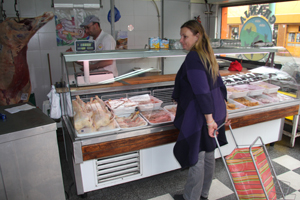Responding to consumer expectations and perceptions

With the rate of global population growth, the long term outlook for the agri-food sector is very optimistic with huge opportunities in the emerging markets set to increase the global demand for meat. However, consumer perception of how their food is produced is crucial if the image, or the reality, of wholesome, natural, environmentally friendly, sustainable output is to be maintained.
By Dr Patrick G. Wall, Professor of Public Health, University College Dublin
Improved genetics is creating the potential for better producing animals and more programmed nutrition will deliver on this potential. However attention has to be paid to animal health and welfare or any gains from the former two will be undermined.
Stressed and cruelly treated livestock, antibiotics and other animal remedies being used as a substitute for good husbandry practices, substandard transport and slaughter practices, etc. conjure up images of factory farming and can easily put consumers off. With modern media outlets the sector may be only one youtube clip away from a major scare, so no opportunities should exist that could generate adverse publicity.
Consumer confidence
Expansion of production either through better performing livestock, increased herd/flock sizes, or both, will lead to greater profitability only if the supply demand curve stays in balance. One further risk to be addressed, and one that cannot be ignored, is consumer confidence. Consumer confidence can be as volatile as commodity prices and food scares associated with contamination incidents can cause untold reputational damage to an entire sector overnight.
The impact of the social network channels means that it is now extremely difficult to control the messages the public receive. An example of the impact of sensational media coverage was well illustrated by the outbreak of E. coli O104 associated with bean sprouts in Germany in the Summer of 2010 which resulted in the decimation of the Spanish cucumber industry and a total ban of all salads from the EU by the Russian authorities. Scientific risk assessment, and evidence based risk management, are routinely disregarded in the eye of the storm and political and policy responses are often in proportion to the media coverage rather than the risk to public health.
Human nutritional needs
Just as with animals the nutritional needs of humans varies throughout their life course and level of activity. It is interesting the attention to detail paid to animal nutrition in comparison to the lack of attention paid to human nutrition given the clear relationship between diet and both short term and long term health. Often nutritional advice is generic whereas the needs of the different subsets of the human population is very different. Everyone in the Agrifood business needs to be aware of the human health consequences of their activities.
Food is the fundamental fuel for the human body and good health is inextricably linked to a good diet. A persons health is their most valuable asset and agricultural products need to be positioned in the health promoting category rather than in the indulgent or harmful food category. At one end of the Agrifood industry spectrum the functional food gurus are focusing on health enhancing ingredients as a point of differentiation, however all producers need to consider that they are in the human health business and be aware that consumer confidence is a fragile thing and cannot be taken for granted in the race for scale and profits.













